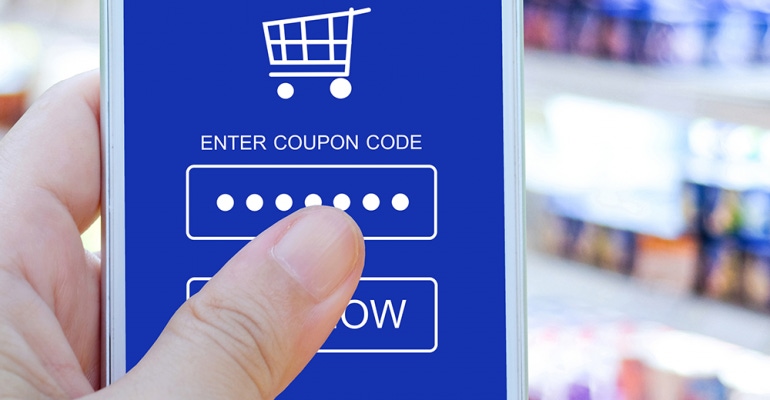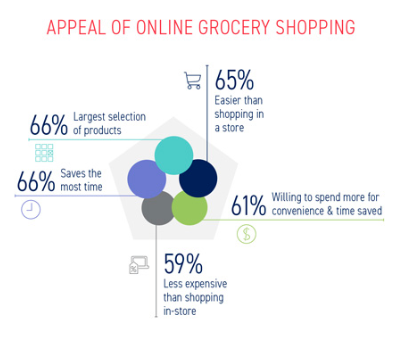Digital shoppers seek savings and convenience via coupons and loyalty programs.
April 18, 2019

Consumers have an increased affinity for shopping online for food, household goods and health and beauty care (HBC) products while balancing their desire to save money, says the latest research from Valassis, which notes that 68% of online grocery shoppers say that using coupons and discounts to save money is the most important factor when shopping.
According to the 2K19 Coupon Intelligence Report, overall, 63% of consumers make all or most of their food purchases in-store. But online shopping has increased year over year by 44% for food; 40% for HBC products; and 38% for household items.
The online grocery experience still has room for improvement, noted Valassis. Among online grocery shoppers: 64% miss the sensory experience of touching and smelling produce; 62% find it frustrating when they can’t use coupons or discounts; and 62% are uncomfortable having someone else pick out their produce or other perishable items.
“In today’s ultra-competitive grocery environment, the stakes are high for brands and retailers to truly understand the consumer and what’s important to them in order to drive activation,” said Michelle Engle, senior vice president, marketing, Valassis. “Marketers must leverage predictive intelligence that connects online and offline data across channels, offering consumers what they value–savings, convenience, personalized experiences and real-time engagement.”
As the grocery landscape evolves, according to the Valassis report, consumers continue to seek savings and convenience via print and digital channels. Online grocery shoppers are prominent coupon advocates, with 65% using them always or very often versus 45% of all consumers. To benefit from enhanced savings, 60% always or very often load coupons onto loyalty/frequent shopper cards versus 40% of all respondents. Meanwhile, 36% of all consumers would use more coupons if they were able to use them in any store or online—approximately 25% avoid shopping online because they can’t use coupons or get in-store deals.
Further, the online grocery shopper is no amateur at finding savings, said Valassis: 76% prioritize going to a store with the lowest prices when shopping for groceries, and 59% take paper/printed coupons with them on shopping trips. In addition, these shoppers have higher engagement with store circulars to determine where to shop: 62% look at printed circulars/ads to determine where to shop vs. 46% of all consumers, and 60% look at online circulars/weekly ads to decide which retailers to shop at vs. 37% of all consumers.
 (Credit: Valassis)
(Credit: Valassis)
Online shopping does appeal more broadly to consumers aiming to balance work and home priorities. According to Valassis’ report, 29% of respondents indicate work and family needs make it challenging to complete shopping, household tasks and errands. Additionally, 46% said they need better solutions to save more money and 39% said the same about saving time. With that, retailers are taking note by offering more convenience-oriented options such as buying online and picking up in-store and home delivery services.
Valassis found 77% of online grocery shoppers are between 18 and 44 years old, skewing more heavily toward Millennials, younger Gen Xers, males and households that have an average income of $80,900. The top reasons consumers are shopping online include saving time (66%); a larger selection of products (66%); easier than shopping in-store (65%); and less expensive than shopping in brick-and-mortar venues (59%).

About the Author(s)
You May Also Like




